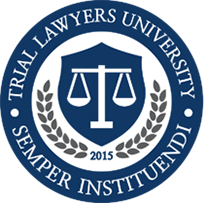In one of the 2nd Department’s highest sustained verdicts for a nonmedical malpractice case, The Law Office of Richard M. Kenny recovered $13 million in damages on behalf of a client who had been severely injured in a vehicle accident. The case had been filed in January of 1995 against the driver and Nassau County when the plaintiff was involved as a passenger in a vehicle accident, determined to be due to dangerous road design. After a 13-year struggle, the appellate court affirmed the initial verdict and awarded the firm’s client an award of $13 million.
The plaintiff, M.K., was in the front passenger seat of K.P.’s car while he was driving on a road in Nassau County, New York. M.K. sustained serious injuries, including a neck fracture, when the car hydroplaned, spun out of control and hit a tree. M.K. filed a personal injury lawsuit, with the help of The Law Office of Richard M. Kenny, against K.P. and the county for her sustained injuries. The initial verdict of the jury awarded her over $13 million in damages.
The jury, using the comparative fault system when placing fault on the two defendants, determined that the driver of the car was 13 percent responsible for the accident and injuries and that Nassau County was 87 percent at fault for the injuries. The breakdown of the award to M.K., who was 25 at the time of the accident, is as follows:
- Pain and suffering (future life expectancy of 46 years) – $1,200,000
- Future medical expenses not including medication (for 46 years) – $1,020,569
- Future medication expenses (for 46 years) – $7,416,045
- Future loss of wages (for 18.25 years until retirement age) – $1,100,000
- Future housekeeping services (for 46 years) – $374,436
- Future patient care assistance (for 15 years until age 65) – $673,612
After the trial, the judge from the first court refused to reduce the award by any amount; Nassau County appealed the decision. The appeal was to no avail for the defendants and the appellate court unanimously affirmed the verdict. Nassau County was forced to vote a bond issue to pay the damages to M.K. The road where the accident took place was known to be unreasonably dangerous so the defense had few options for refuting the allegations filed.
Furthermore, the visibility of M.K.’s injuries during the trial demonstrated the extent of the damage to the jury, who had trouble ignoring the seriousness of her condition. Expert testimony from medical professionals informed the jury that M.K. was likely to require at least nine more major surgeries throughout her lifetime to maintain the morphine pump that had been implanted in her stomach.











